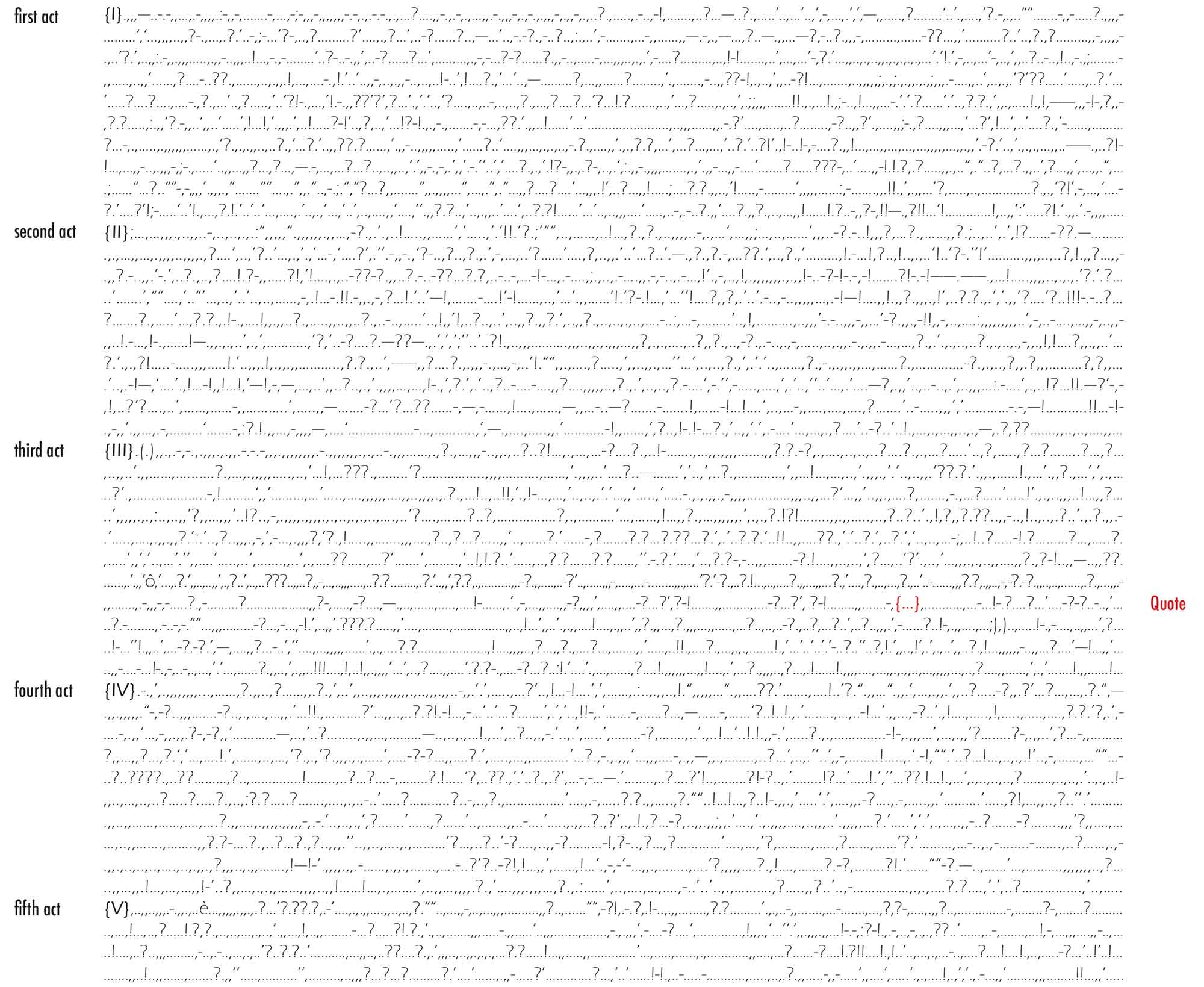
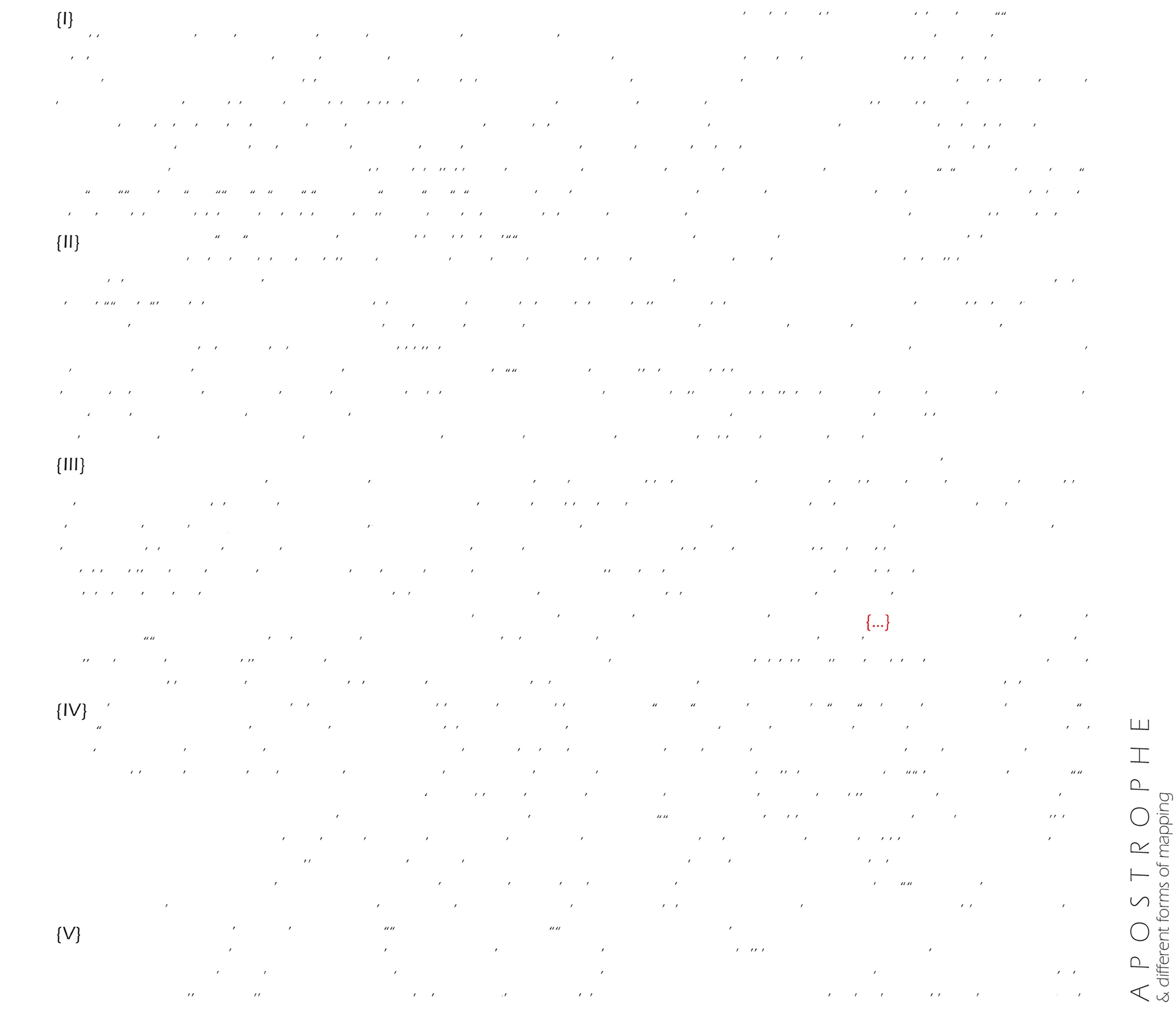
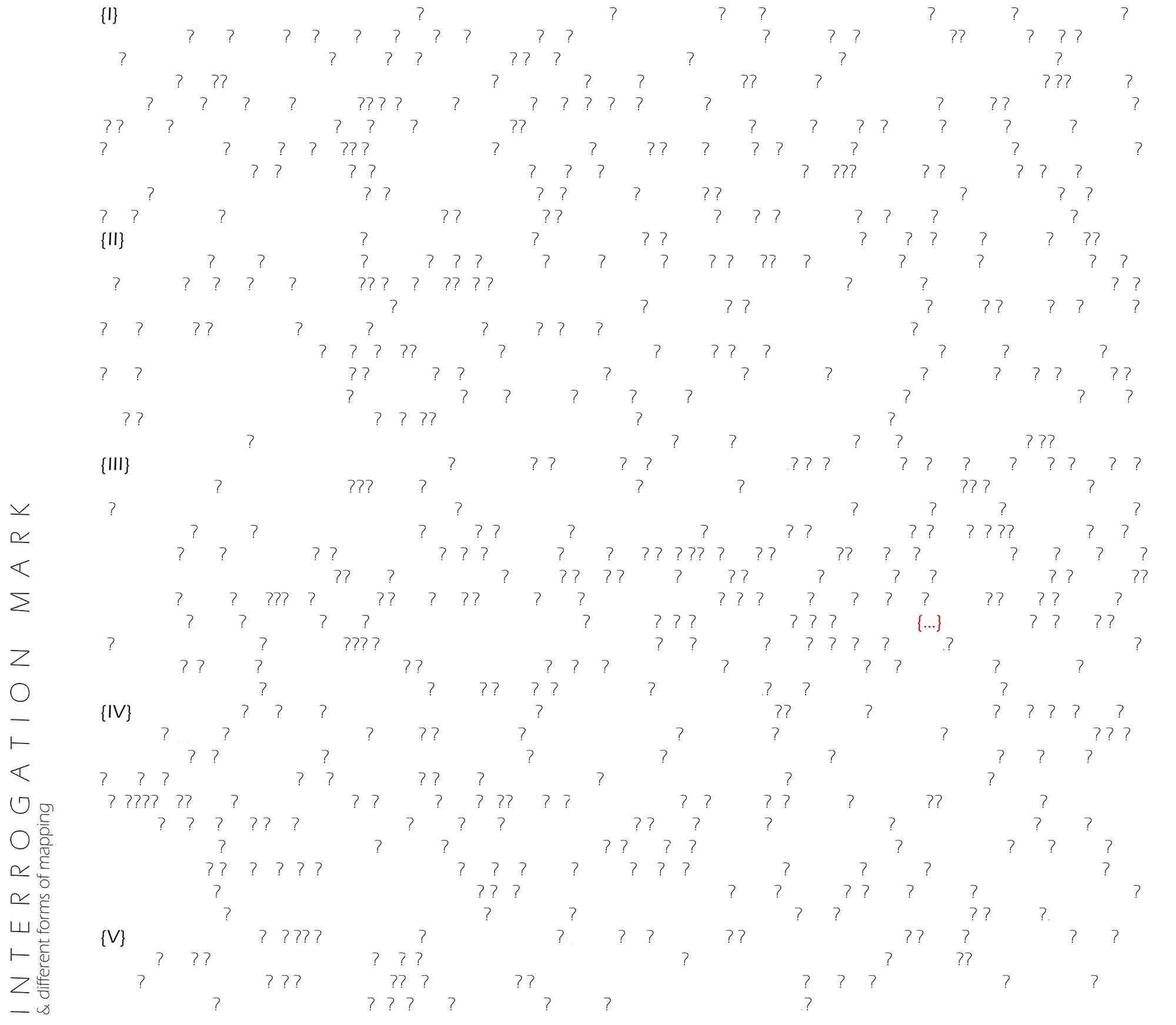
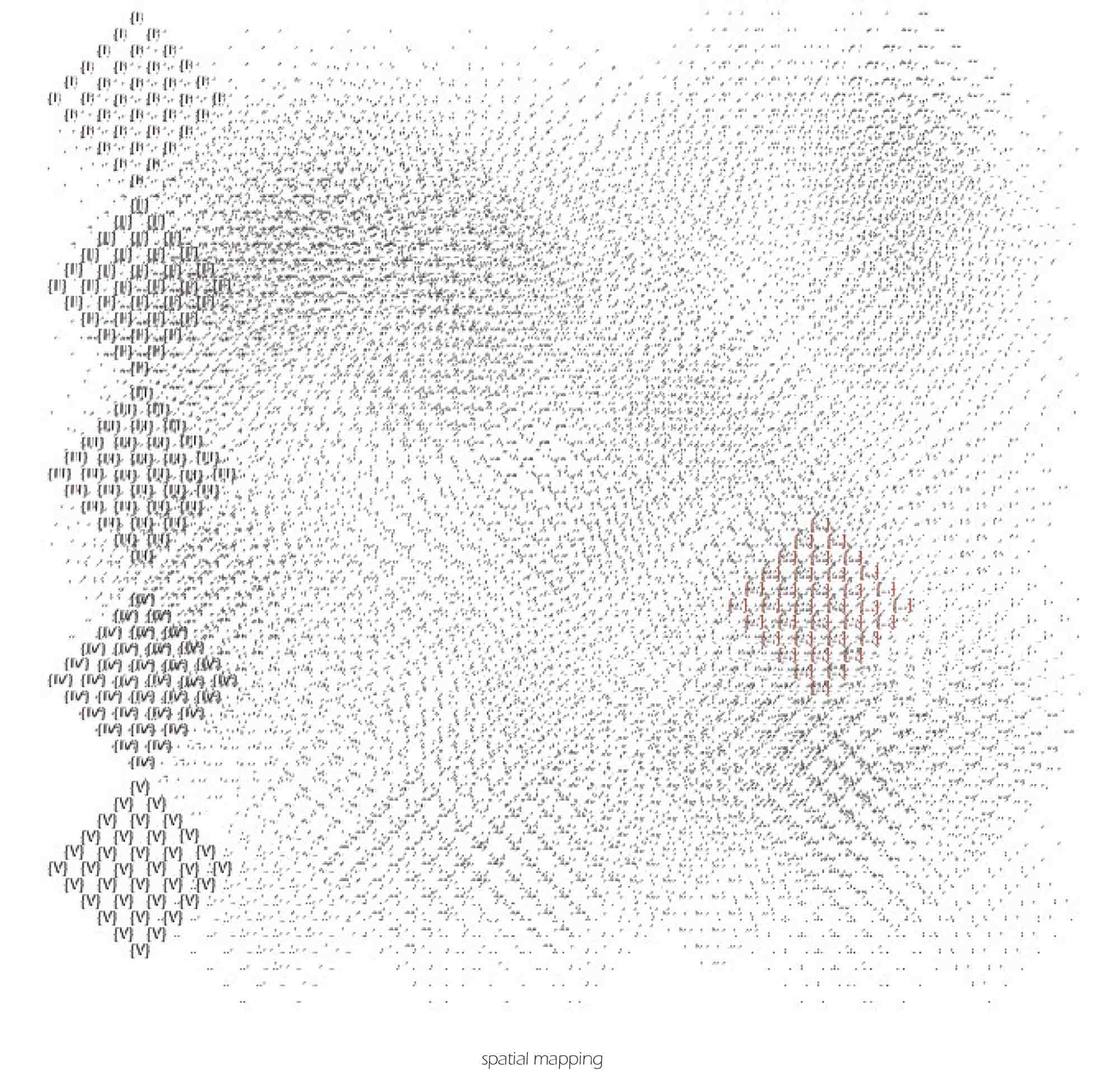
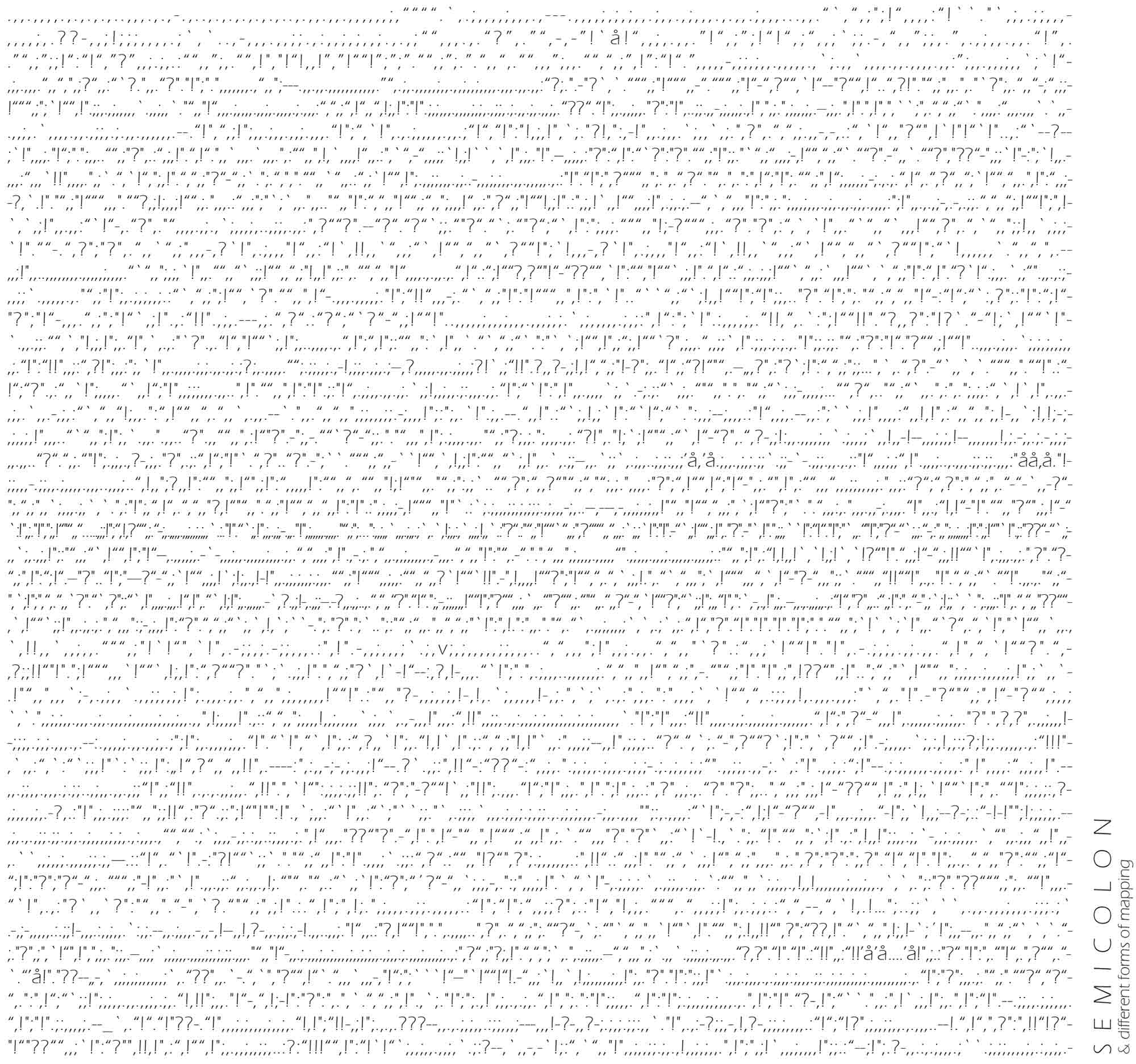

The Glorious Tomb to the Memory of Nothing is a literary interpretation for locating and visualising the predefined use of punctuation beyond common reading methods, and thereby establishes a playful discussion of literary traces.
The Glorious Tomb to the Memory of Nothing explores French Philosopher Jacques Derrida’s idea of différence through a visual play of punctuation. In his inspirational manifesto from 1968, Derrida focuses on the relationship between written text and its hidden meaning. By analyzing the structure and necessity of signs, such as punctuation, he develops an argument about a strange temporal space that signs create in between verbal and writing language. Thus Derrida’s idea of différence refers to Ferdinand de Saussure’s semiotics, and Martin Heidegger’s distinction of ‘Being and beings’(1), this experiment here rather focuses on the spatial aspects of written language, namely the possibility of finding additional meaning within the analysis of punctuation. In other words The Glorious Tomb to the Memory of Nothing is an active literature interpretation for visualising a ‘(…) play of traces.’(2)
This, then leads to Arthur Schnitzler’s famous drama ‘The Vast Domain’ developed in 1911. ‘The Vast Domain’ has a distinctive use of apostrophes, which weaves the political context of early nineteenth-century; a time of drastic social and political change in Austria, into a tragicomedy of class struggle. Here, Schnitzler formulates his rising interest in Viennese aristocratic society, and how language can be used as a form of segregation. For this reason, the applied method of transcoding visualises how Schnitzler uses apostrophes to challenge spoken from written language, high from low German, and thereby distinguish Viennese aristocratic society from the proletarians. Hereby, the subject of each punctuation sign stays discrete, filled with meaning, yet silent like a tomb. And like a tomb, its ambition becomes vital through admiration.
(1) Jacques Derrida, Speech and Phenomena; And Other Essays on Husserl’s Theory of Signs, Translated, with Introduction, by David B. Allison, (Northwestern University Press, Evanston, 1973), p. 157.
(2) Jacques Derrida, Speech and Phenomena; And Other Essays on Husserl’s Theory of Signs, Translated, with Introduction, by David B. Allison, (Northwestern University Press, Evanston, 1973), p. 154.
Nikolas Ettel is a Lecturer in the Department of Architecture at the University of Hong Kong. Born in Vienna, he holds a BArch from the Academy of Fine Arts Vienna. After several years of architectural practice in Vienna and Munich, he studied Architecture and Fine Arts at Mimar Sinan Fine Arts University Istanbul, and The University of Hong Kong. In London he received The Bartlett Master’s Scholarship to complete his Master of Arts (Architectural History) at The Bartlett School of Architecture, UCL. His published MA thesis supervised by Prof. Jane Rendell and Prof. Mario Carpo concerns the productive interplay between Ludwig Wittgenstein’s ‘language-game’ and digital architectural approaches.
Link: https://issuu.com/bartlettarchucl/docs/2016_10_21_disputed_architectures_-/40
Nikolas work focuses on interdisciplinary studies of films, philosophy and architecture. His main interest on films creates new grounds for architectural discussions while enhancing our understanding of existing ones. This aims to focus attention on works of quality in order to locate film and philosophy in the architectural realm.
Apart from being a Lecturer at HKU, he has taught design and theory studies at The Shanghai Study Center, Meiji University Nakano Campus Tokyo, and was a Visiting Lecturer at University of Saint Joseph Macau. He is a recurring tutor at The International Summer Programme in Architecture – Cities in Asia, an annual design studio that explores Asia’s most dynamic urban contexts.
Link: https://fac.arch.hku.hk/summer/cities-in-asia/
His most recent work is a Design Trust funded research project to explore the celebrated, yet under-theorised back alleys spaces within the Greater Pearl River Delta. The focus is on everyday life activities that define the oddities of connective spaces within Hong Kong and Macau’s urban fabric.
Link: http://designtrust.hk/grant-recipients/alleysinwonderland/
This project has evolved into a form of transcoding that explores the spatiality of a given piece of writing by revealing its underlying infrastructure of punctuation. By practicing a close reading of a text’s infrastructure, systems of signs are revealed which allow additional interpretations beyond common reading methods. All this leads to a method of partially deleting, yet adding, literary meaning to selected literature. In other words, by exploring the spatial quality of chosen textual ingredients, transcoding opens up unexpected layers of interpretation.
Italo Calvino, The Literature Machine: Essays, (London: Vintage, 1997).
Nicholas Rougeux: https://www.c82.net/
Peter Greenaway, The Cook, the Thief, his Wife, and her Lover (1989)






































































